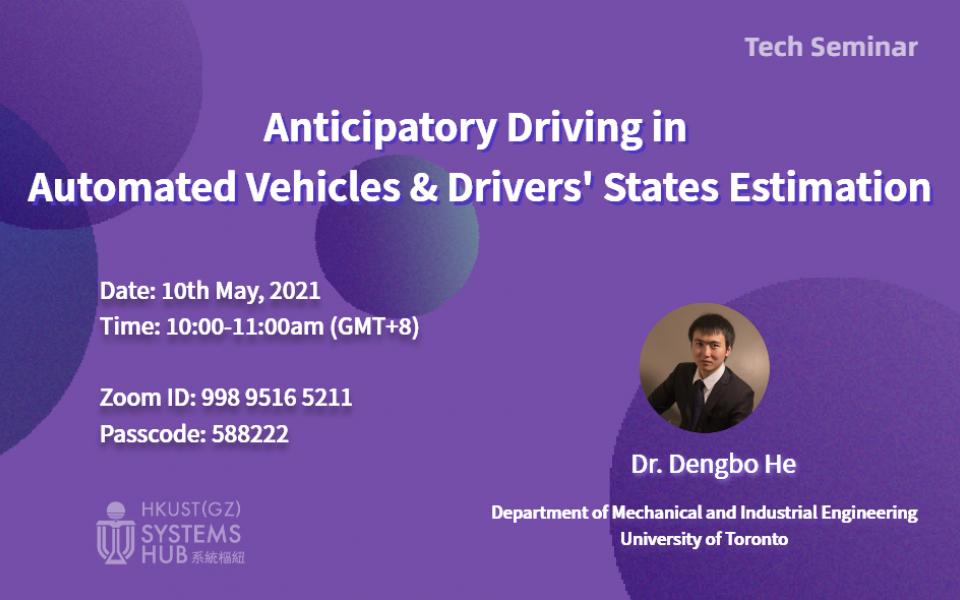INTR & ROAS Seminar: Anticipatory Driving in Automated Vehicles & Drivers’ States Estimation
ABSTRACT
Despite the ambitious plans of vehicle manufacturers, vehicle technologies usually take two to five decades to saturate their potential market, and currently, SAE level-2 automation (SAE J3016_201401) is the state-of-the-art vehicle-automation technology. For this level, drivers are still required to monitor the road and get ready to intervene in a timely manner when necessary. Thus, visually monitoring the driving environment and anticipating how a given situation may evolve (anticipatory driving) may still bring benefits to driving safety. A good design needs to support drivers’ anticipation of both the environment as well as the automated system that they are interacting with and consider drivers’ states when transferring control. Through driving simulator experiments, my research aimed to answer the following questions: (1) how automation affects anticipation in driving and (2) what types of feedback can be effective to support driver anticipation in automated vehicles. Results show that driving experience still matters to driving safety in automated vehicles, with experienced drivers exhibited more anticipatory driving behaviors. Distraction engagement may still need to be avoided in vehicles with the current level of driving automation (SAE Level-2), as distraction engagement can impede anticipatory driving in automated vehicles. Further, this research indicates that drivers in automated vehicles should be trained with proper understanding and reliance on automated driving systems, in addition to the capability to identify hazards, as drivers’ reliance on the automation seemed to have a larger impact on the performance of anticipatory driving compared to drivers’ attention toward the road hazards. Lastly, the findings in this research also provide insights on the future human-machine interface (HMI) design in automated vehicles: the HMIs should be tested in diverse situations and should take drivers’ adaptation to the systems into consideration. We found that the display with only takeover request and automation states information led to less anticipatory driving in automated vehicles, possibly because it led to over-reliance on automation. Providing additional context information in the supporting display presumably supported drivers’ anticipation of potential traffic conflicts.
This talk will also cover another project that aims to estimate drivers’ suboptimal states (i.e., high cognitive load and drowsiness) through consumer-based wearable devices. The algorithms developed in this project have the potential to be applied in automated vehicles to facilitate adaptive automation that dynamically allocates driving tasks between human drivers and automated driving systems.
BIOGRAPHY
Dengbo He is currently a post-doctoral fellow from the Human Factors and Applied Statistics (HFASt) Lab at the University of Toronto, Canada. He received his bachelor’s degree in vehicle engineering from Hunan University, China, in 2012, his M.S. degree in mechanical engineering from Shanghai Jiao Tong University, China, in 2016, and his Ph.D. degree from the University of Toronto, Canada, in 2020. His research focuses on driver distraction, drivers’ behaviors in automated vehicles, and drivers’ state estimation.
